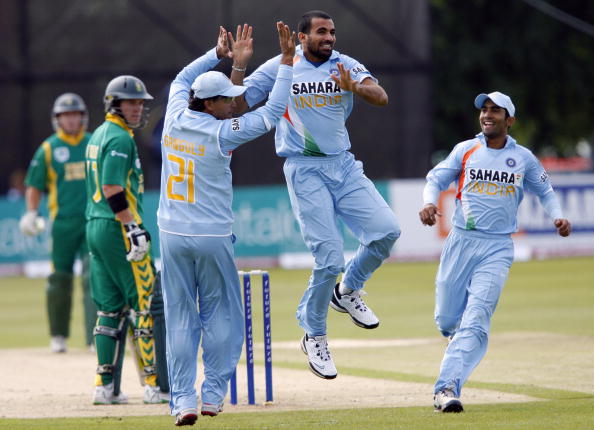
Cricket SKams: When AB de Villiers refused to walk after edging the ball against India
Over the years, cricket, the Gentleman’s game, has had its image tarnished due to various events like the Bodyline series, underarm bowling, usage of an Aluminium bat et al. One incident that brings shame to the sport is when a batsman fails to walk back to the pavilion even after edging the ball.
Though there is nothing mentioned in the ICC rule book that a batsman must walk if he has edged the ball and the umpire fails to raise the finger, the batsman should abide by the Spirit of the Game and walk back to the pavilion as a token of fair play.
The game has seen the likes of Adam Gilchrist, MS Dhoni and Hashim Amla walk back even before the fielding team starts appealing. But, the majority of the batsmen prefer to wait for the umpire’s call before leaving the crease. They cannot be blamed as they are well within their rights to stay at the crease.
Extra cover: 5 controversies that rocked cricket in 2016
Let us recollect an incident when a batsman failed to walk back in spite of edging the ball. Let's go back to July 1, 2007, when India took on South Africa in the series decider of a three-match ODI series at the Civil Service Cricket Club in Stormont, Belfast, Ireland.
The start of the match was delayed due to rain and when the conditions were finally deemed fit for play to begin, the match officials announced that it would be a 31-over match. Indian skipper Rahul Dravid opted to bat first, keeping the overhead conditions and the possibility of D/L method coming into play in mind.
Indian pacers breathed fire as they sent back opener Morne Van Wyk and skipper Jacques Kallis inside the first four overs. It was then that a 23-year-old AB de Villiers found himself in a controversial situation.
On the first delivery of the fifth over, Zaheer Khan pitched the ball on a back of a length on off-stump and managed to get the ball to move away from the batsman. The movement was just enough for the ball to kiss the outside edge of De Villiers’ bat and go straight into the hands of the first slip fielder, Sachin Tendulkar. The Indian fielders started celebrating the dismissal, but de Villiers stood his ground and waited for the umpire, Aleem Dar to raise his finger, which did not happen.
There was a thick edge and the batsman would have been aware of what had happened but in spite of that, de Villiers refused to walk, much to the disappointment of the Indian fielders. The ball had taken a big deviation after the South African had edged it, but the umpire failed to spot that or listen to the nick, adjudging the South African not out, much to the dismay of the Indians, who had already begun their celebrations.
De Villiers, on his part, should have walked, but he failed to abide by the spirit of the game, leaving the Indians scratching their heads at Dar’s decision. The right-hander, who was batting on 8 when the incident happened, failed to grab the opportunity though as he was caught behind by MS Dhoni off the bowling of Sourav Ganguly for 15.
Herschelle Gibbs scored 46 off 67 balls and shared a 99-run partnership with Justin Kemp, who scored a run a ball 61. South Africa managed to score just 148 runs in their 31 overs. Ajit Agarkar, Sachin Tendulkar and Ganguly took two wickets apiece for the Men in Blue.
Also read: Is AB de Villiers right in thinking about Test retirement?
Chasing a modest total of 149 to win in 31 overs, India lost the wickets of Sachin, Gautam Gambhir and Ganguly early, with the scorecard reading 38/3 in the ninth over. India's Mr. Reliable, Rahul Dravid, along with Yuvraj Singh, put on 70 runs for the fourth wicket before the former was run out by Mark Boucher.
Yuvraj reached his fifty and took India home by six wickets with four balls to spare. With this win, India won the series 2-1, however, this series will mainly be remembered for de Villiers’ unsportsmanlike conduct.
Extra cover: When AB de Villiers cheated
